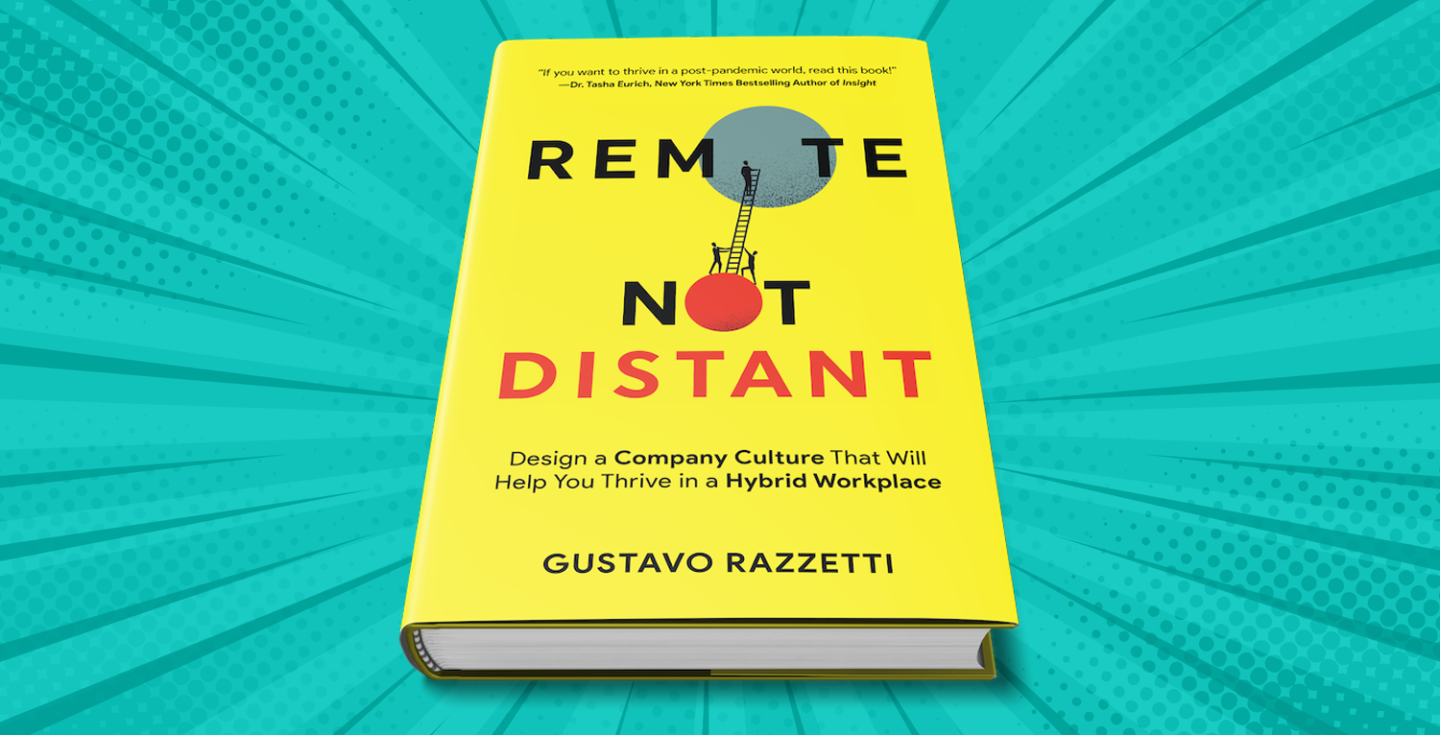Menu

What We’re Reading: Remote, Not Distant by Gustavo Razzetti
It might be a new year, but one thing that hasn’t changed is the ever-growing importance of effectively navigating hybrid and remote working. That’s why this month we have been reading Remote, Not Distant: Design a Company Culture That Will Help You Thrive in a Hybrid Workplace by Gustavo Razzetti.
Being the creator of the Culture Design Canvas – a framework that helps organizations map, assess, and design their culture – it’s no surprise that Gustavo’s latest book aims to explore the secrets behind successful remote workplace cultures.
After spending years studying businesses like Amazon, Volvo, and Microsoft, Gustavo addresses the multiple key areas that are crucial for organizations to be able to operate effectively in remote and hybrid settings. This includes examining culture, how to keep a team connected, asynchronous communication, facilitating conversation, and finding and defining the right hybrid model for your business.
Gustavo outlines the five key mindset shifts that companies need to make in order to reset their workplace culture and optimize their remote working environments:
- Intentionally design workplace culture – this will see the active involvement of employees in this design process, and will require employers to be open to experimentation. If they are finding that something isn’t working, they shouldn’t be afraid to go back to the drawing board and adjust. Involving the team in the process means you will create a culture that works for everyone – and highlight how valued your employees’ opinions are!
- Prioritize impact over input – working long hours and being readily available at all times are not the defining factors of an employee; performance should be measured on the results achieved! This shift in mindset will see employers encouraging employees to showcase their accomplishments rather than perpetuating the outdated ways of presenteeism.
- Forget traditional work-life boundaries – remote work blurs the lines between home-life and work-life, and in order to successfully operate remotely, employees need to be allowed to embrace the messy reality it can sometimes bring. Normalize interruptions from children or furry friends, and be more lenient to dressing down when working at home. This helps ensure the home remains a sanctuary that still symbolises comfort and rest.
- Collaboration doesn’t have to be synchronous – in hybrid workplaces, it’s important to acknowledge that everyone works according to their own timetables. Embracing this flexible and autonomous approach allows individuals to optimize their productivity and discover their peak working hours.
- Delegate decision-making to empower teams – get your teams involved with creating their hybrid working policies and empower them to have a say in how and where they work. This solidifies the culture of autonomy that threads through all these mindset shifts and helps to create a more fulfilling workplace experience.
And this is just the tip of the iceberg. Throughout the book, Gustavo explores why the ‘office’ doesn’t equal ‘culture’, and how to build psychological safety in a hybrid working world.
Our OrgEssentials team specializes in start-up and transformation, and so if you would like to discuss how we can help bring these remote working practices to life in your workplace, please get in touch with us!
And if you would like to get your hands on a copy of Remote, Not Distant, you can head over here for the UK and here for the US.



